Thought Leadership
6 Must-know eCommerce strategies to combat inflation

With inflation on the rise and consumers tightening their belts, eCommerce and retail brands are searching for ways to stay competitive. To help you thrive, we asked eCommerce experts to share their best tips for combating inflation. Here are their answers.
1. Prioritize transparency, quality, and sustainability
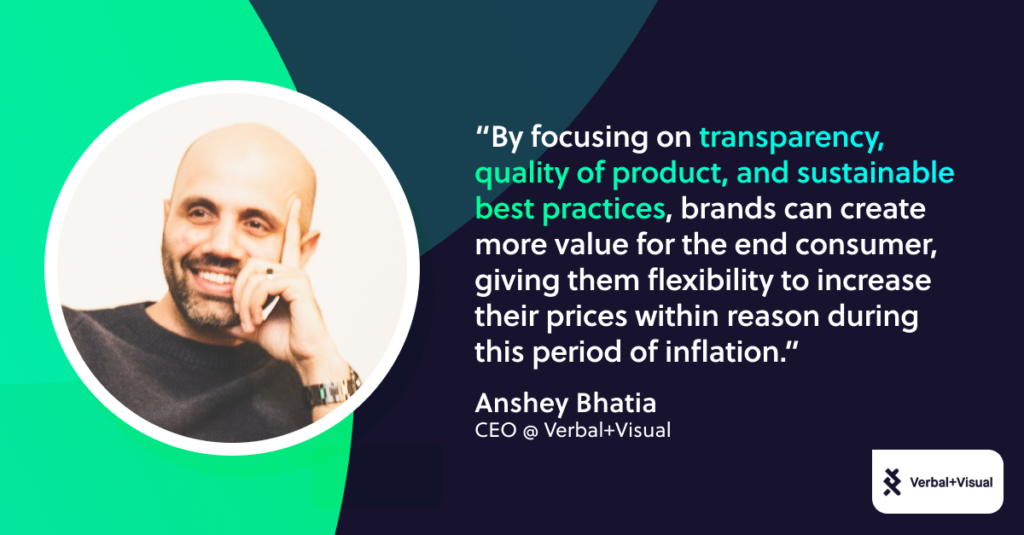
“By focusing on transparency, quality of product, and sustainable best practices, brands can create more value for the end consumer, giving them flexibility to increase their prices within reason during this period of inflation. Brands’ customer bases may buy slightly fewer items as a whole, but those customers will truly value those items and become brand evangelists due to the increase in transparency, quality of product, and emphasis on the environment. These positive reinforcements will result in the success of the coveted trinity of people, product, and planet.”
– Anshey Bhatia, CEO, Verbal+Visual
2. Test consumer price sensitivity
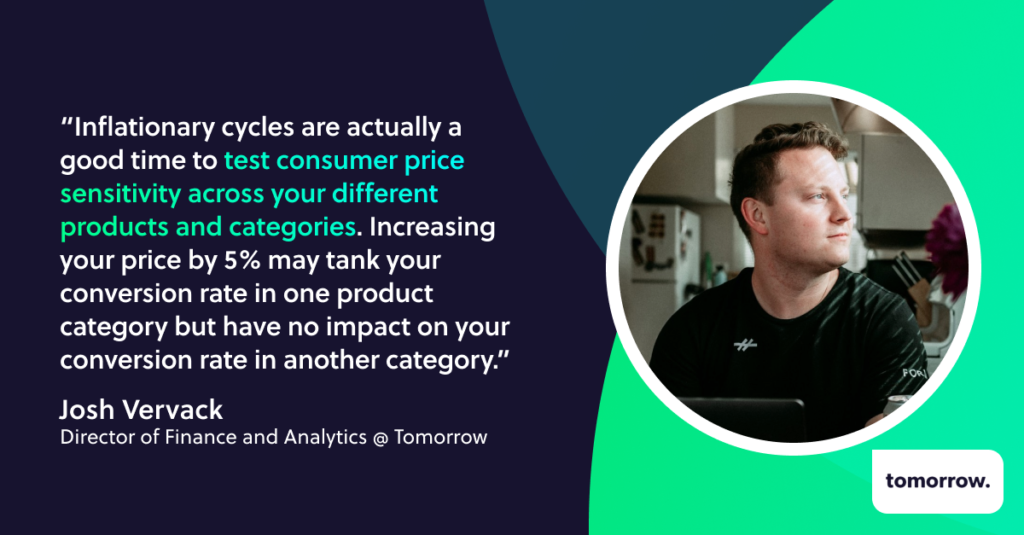
“Although cost and price are oftentimes thought of as ‘related,’ you shouldn’t assume they should move together. If inflation has impacted your unit costs, it’s important to update your calculations and make business decisions based on this new reality. Separately, on the pricing front, inflationary cycles are actually a good time to test consumer price sensitivity across your different products and categories. Increasing your price by 5% may tank your conversion rate in one product category but have no impact on your conversion rate in another category. Keep the price increases that don’t impact conversion rate heavily, and recapture lost profits on rising unit costs.”
– Josh Vervack, Director of Finance and Analytics, Tomorrow
3. Focus on building relationships, not transactions
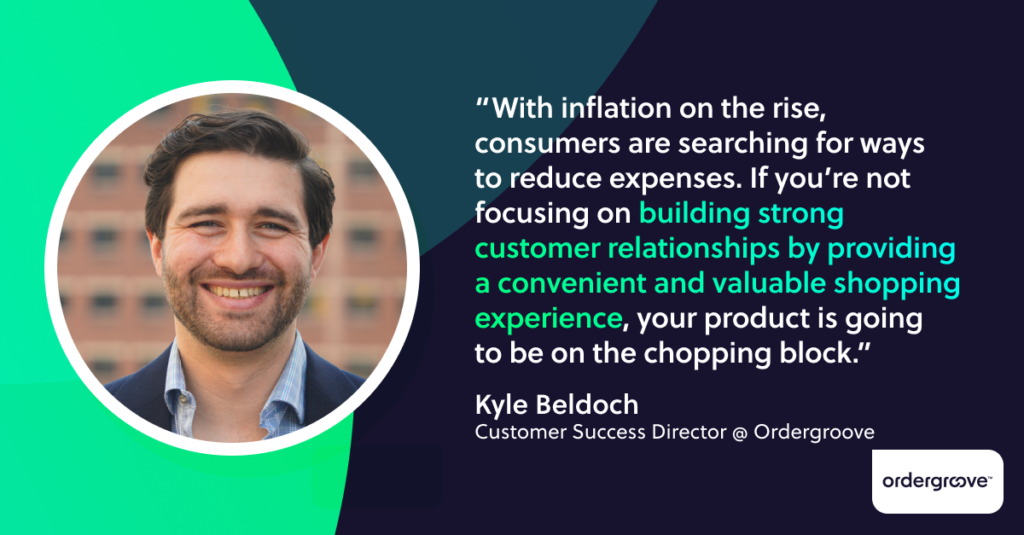
“With inflation on the rise, consumers are searching for ways to reduce expenses. If you’re not focusing on building strong customer relationships by providing a convenient and valuable shopping experience, your product is going to be on the chopping block.
“To fight the effects of inflations, focus on what consumers want most – convenience and value. Implement a subscription experience to make shopping with your brand easy and valuable. Launch a loyalty program to reward customers for staying with your brand. Meet shoppers where they are by communicating with them through SMS. Use your customer data to personalize every aspect of your shopping experience.
“For subscriptions specifically, fighting inflation means going back to the basics. Make subscriptions the easiest and cheapest way to purchase from your brand, and then highlight this messaging at every touch point. Emphasize that consumers will save money over the long-term by enrolling in your subscription experience and then show them how much they’ll save. Rewarding retention also goes a long way toward making subscribers happy, especially when the reward is personalized to their needs based on their past purchase data.
“Complement your subscription incentive messaging by emphasizing convenience, also in as many touch points as possible. Ordergroove recently conducted a consumer survey and found that 85% of consumers prefer to shop with brands that make their lives more convenient. Few things are more convenient than having a product arrive directly at your doorstep. Convenience doesn’t stop here, however. Give subscribers complete control over their subscription experience, including the ability to pause their subscription, skip a month, and/or swap out a product for a similar item. You’re providing convenience through flexibility.
“If you’re concerned about margins, consider implementing product bundles or a build-a-box experience. You can sell the box at a higher price point while simultaneously providing subscribers with flexibility.”
– Kyle Beldoch, Customer Success Director, Ordergroove
4. Offer discounts to the right audience
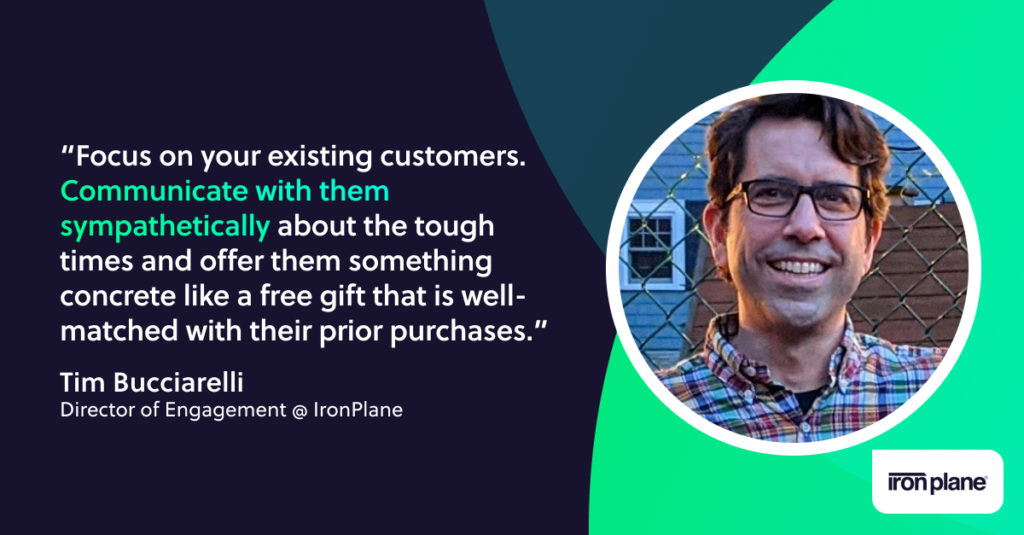
“Inflation is one element dragging down consumer confidence. Inflation, recession, stock market downturns, cost of real estate/living in major US metro areas, along with bigger picture insecurities with the pandemic(s) and climate change, lead to greater insecurity. These all contribute to lower consumer confidence. Even if inflation is not as bad or as long as some fear, as long as the other elements remain, consumer confidence will be negatively impacted. Businesses are also suffering, so discounting in any manner is a tough choice, but if offered to the right audience, it could work. I would consider three approaches:
- Focus on your existing customers. Communicate with them sympathetically about the tough times and offer them something concrete like a free gift that is well-matched with their prior purchases.
- Promote any built-in savings such as subscriptions with discounts over time or buy-now-pay-later options (ideally the ones with 0% interest) – make the savings a prominent feature.
- Consider which product categories could potentially make people feel better – whether it is a product that helps them feel more prepared for extreme weather or the next pandemic, or products that focus on self-care in stressful times, or products that help them reduce their environmental footprint (and save them money in the process)
“Try-before-you-buy, an innovative returns process, or selling second-hand versions of your products are all good ideas, but for me, they likely will take too much of an investment to build up just for the current economic situation. I would prefer to make smaller tweaks and ride out the storm. If ideas like these still make sense in good times, that’s when I would make the investment.”
– Tim Bucciarelli, Director of Engagement, IronPlane
5. Diversify to make your supply chain more durable
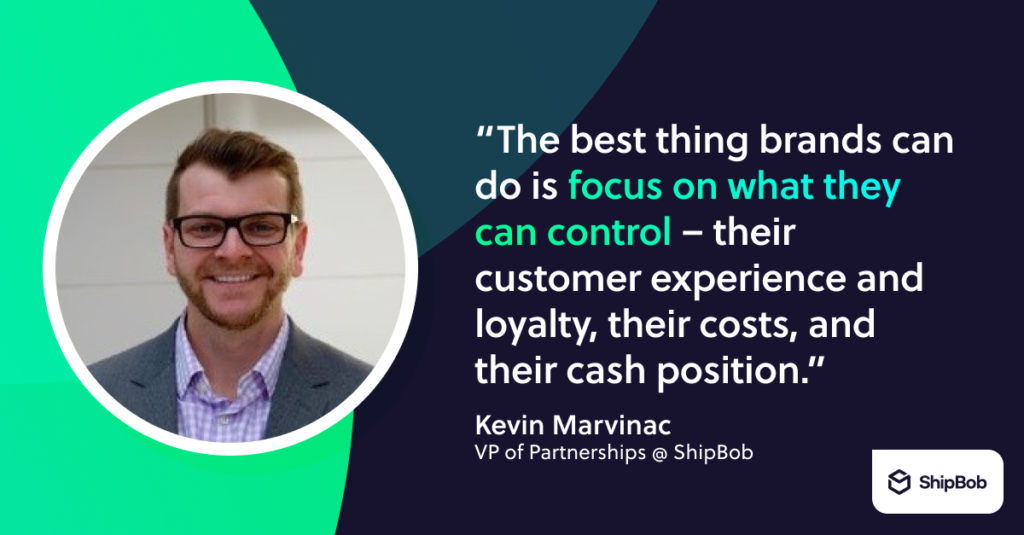
“I think inflation is already affecting eCommerce businesses. It’s here. It’s been here since March or so. I see a few main ways merchants are being squeezed.
“First, cost pressures on raw goods. This is really category-dependent, but particularly in food/beverage, it’s evident. Luckily, it seems like most economists think this is partially supply-driven (e.g. the Ukraine war, which interrupted wheat and sunflower oil production globally), so the hope is that these pressures are a spike that will eventually subside.
“Second, cost pressures on logistics. This is – for better or worse – where we live at ShipBob. The biggest challenges here have been 1) post-COVID inefficiencies in freight lanes (which lead to really expensive freight) and 2) fuel cost increases. We are all hoping these are frictional and will go down soon. My No. 1 piece of advice to brands now is diversify to make your supply chain more durable. Many brands – even large ones doing $100M+ GMV – are too reliant on one carrier for their shipping. Maybe they have a sweet deal with UPS Ground and have for years. Well, in this current climate, UPS may decide to levy $5 fuel surcharges, and that will absolutely hammer your margin. But, if you are either 1) diversified or 2) working through a reseller or 3PL with way more scale than you, likely those surcharges will be reduced (sometimes by a factor of 10!) or eliminated as you buy labels from other carriers. This is one of the main things we focus on at ShipBob, and it’s a huge benefit to our merchants. In fact, we only just passed on a small surcharge starting in July, whereas most were impacted by April.
“Third, reduced demand due to reduced discretionary income. This is measured by the inflation index, which, as we all know, is largely demand-driven as our economy got “too hot” after COVID. Lots of speculation on what will happen here – will we enter a true recession? If so, will it be short (a la 2000 dotcom bust) or longer (like we saw in 2008)? The best thing brands can do is focus on what they can control – their customer experience and loyalty, their costs, and their cash position.”
– Kevin Marvinac, VP of Partnerships, ShipBob
6. Double down on retention

“eCommerce brands might be worried about how inflation will impact spending, and rightly so, but there is a bright side. Yotpo recently surveyed 2,000 consumers about their outlook and shopping habits during this time of high inflation and economic uncertainty. More than 51% said news about the economy has them spending less. That’s the bad news. But consider this: more than 82% of them said they will still buy from their favorite brand. So, every brand’s priority right now should be to double down on retention and strengthen the relationships with the customers they already have — and they can accomplish that through loyalty programs, SMS marketing, and subscriptions. Combined with delivering a superior customer experience every time, that’s a winning formula for a recession-proof business.”
– Connor Peay, Partner Manager, Yotpo
Each month Ordergroove asks experts to share their opinions on eCommerce, Relationship Commerce, or subscriptions. If you have a question for our experts or want to be considered for inclusion in future blog posts, email us at hi@ordergroove.com.